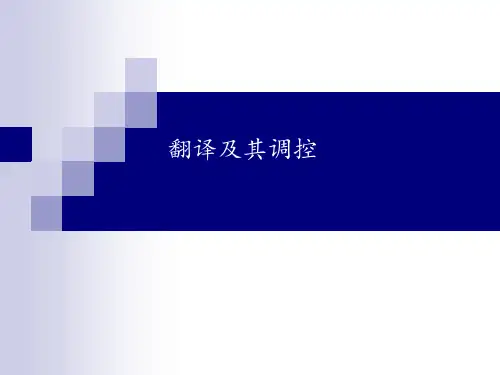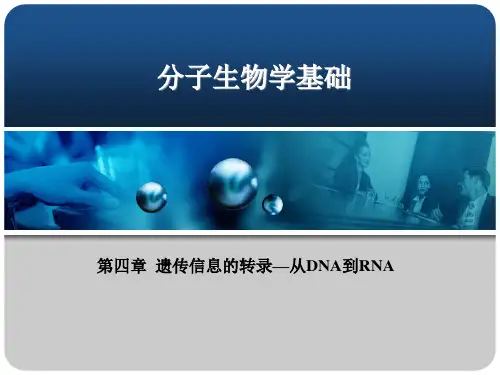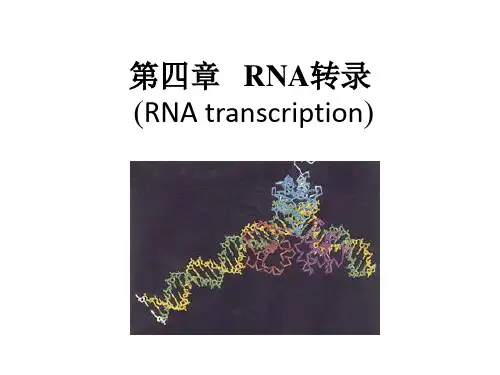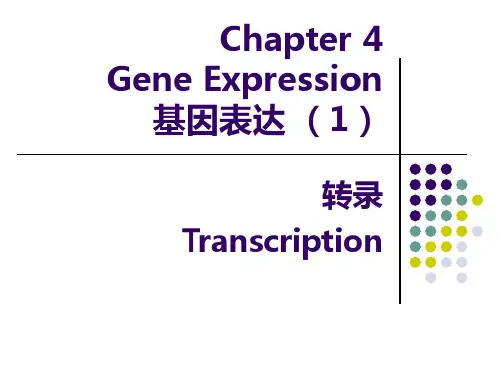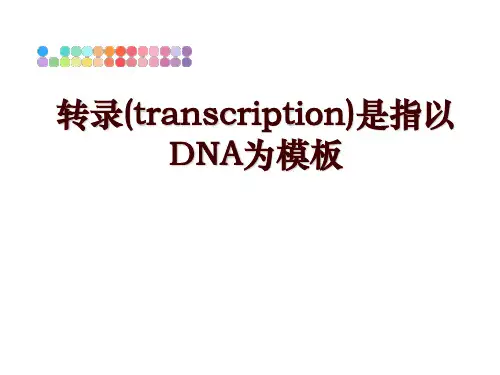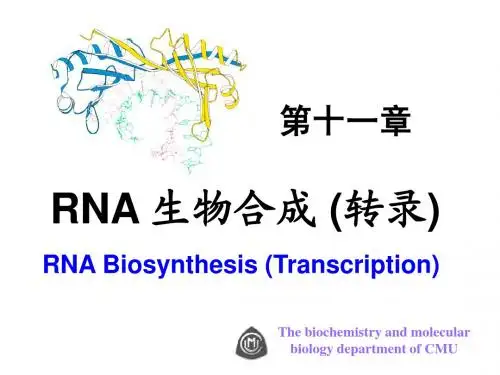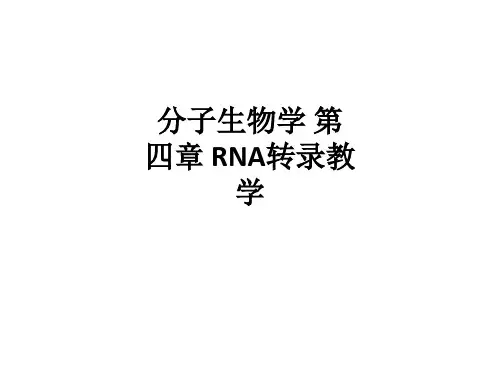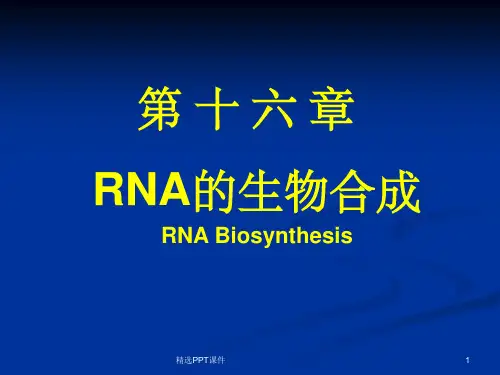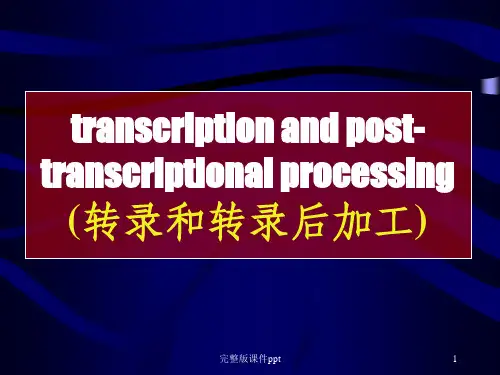真核生物转录单位为单顺反子真核基因转录产物为单顺反子即一个基因编码一条多肽链或rna链每个基因转录有各自的调节元件原核生物转录单位为多顺反子原核生物转录起始rnapolymerasemustrecognizewherewhichrnapolymerasesperformtasksdifferssomewhatbetweenbacteriaespeciallyimportantstepgeneexpressionbecausemainpointcellregulateswhichproteinswhatrate
© 2002 by Bruce Alberts, Alexander Johnson, Julian Lewis, Martin Raff, Keith Roberts, and Peter Walter.
basehydrogenU can base-pair by hydrogenbonding with A , basethe complementary basepairing properties described for DNA apply also to RNA (, G pairs with C, and A pairs with U). It is not uncommon, however, to find other types of base pairs in RNA: for example, G pairing with U occasionally.
Figure 6-6. RNA can fold into specific structures. RNA is largely single-stranded, but it often contains short stretches of nucleotides that can form conventional base-pairs with complementary sequences found elsewhere on the same molecule. These interactions, along with additional “nonconventional” base-pair interactions, allow an RNA molecule to fold into a three-dimensional structure that is determined by its sequence of nucleotides. (A) Diagram of a folded RNA structure showing only conventional base-pair interactions; (B) structure with both conventional (red) and nonconventional (green) base-pair interactions; (C) structure of an actual RNA, a portion of a group 1 intron (see Figure 6-36). Each conventional base-pair interaction is indicated by a “rung” in the double helix. Bases in other configurations are indicated by broken rungs.
